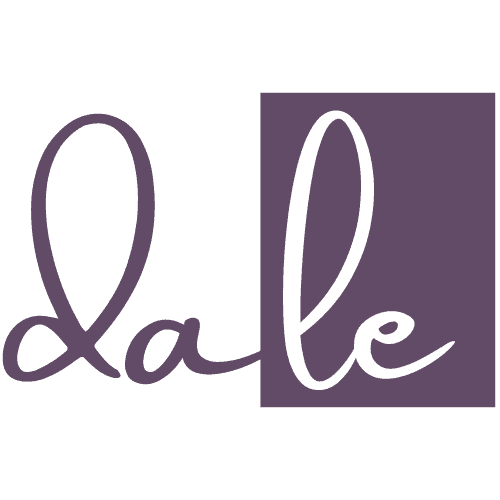I’ve ummed and ahhed about writing about trauma for a while, but since I’ve written my way through so much of my own, it seems fitting to tackle it as I write my personal story/self-help book.
Before I started, I wondered if any of my stories would trigger me. They didn’t – not in the way I expected. I didn’t feel the need to reach out for support or hide under my duvet for days. But then, I had a process that’s been working for me. Plus, I’ve had some fabulous therapy over the years and wouldn’t hesitate to call my favourite EMDR therapist if something arose.
When I work with clients, I always advise them to have someone in mind should they get triggered and need support. I believe this is the most professional and caring thing I can do. Sure, I can listen and offer ideas, but I’m not a counsellor or therapist – and this boundary is part of my contract with anyone I work with.
The Courage to Transform Pain into Purpose
There’s a particular kind of courage required to write about trauma. Not just the initial courage to face what happened, but the sustained courage to transform those experiences into words that might help others.
Yet many writers carrying stories of trauma, abuse, loss, or other profound difficulties find themselves caught in an impossible bind: they feel called to share their healing journey, but they’re terrified that writing about it will drag them back into the darkness they’ve worked so hard to escape.
This fear isn’t unfounded. Writing about traumatic experiences can indeed be retraumatising if approached without care, preparation, and appropriate support. But it doesn’t have to be.
Here’s what I’ve learned: With the right understanding, tools, and boundaries, it’s possible to write about trauma in ways that support your continued healing rather than undermining it.
When Writing Becomes Dangerous
Retraumatisation occurs when writing about trauma triggers the same psychological and physiological responses you experienced during the original events. This happens when:
- You’re still in active crisis. If you’re in the acute phase of trauma recovery, writing about your experiences may be premature. Your nervous system needs stabilisation before it can safely process traumatic material.
- You lack adequate support. Writing about trauma without proper therapeutic, emotional, or practical support leaves you vulnerable to being overwhelmed.
- You’re writing from the wound rather than the scar. There’s a big difference between writing from fresh, unprocessed pain and writing from integrated experience. Wounds are still bleeding; scars tell a story of healing.
- You’re forcing yourself to relive rather than remember. Healthy trauma writing involves remembering and reflecting, not reliving experiences in vivid, overwhelming detail.
- You’re writing for the wrong reasons. If you’re writing for revenge, to prove a point, or to process unaddressed trauma, you’re setting yourself up for retraumatisation.
The Foundation You Need First
Before writing about traumatic experiences, these foundations should be in place:
- Therapeutic support. You don’t need to be in active therapy, but you should have access to professional mental health support if writing triggers unexpected responses. As I said, this is essential.
- Emotional stability. You need to be in a relatively stable place emotionally. Not crisis-free (that’s unrealistic), but not in acute distress. You need emotional reserves.
- A support network. Beyond professional help, you need people who understand your healing journey and can provide practical and emotional support during the writing process.
- Self-care resources. Well-established practices for managing stress, anxiety, and overwhelm. Meditation, exercise, creative outlets, spiritual practices – whatever reliably helps you return to equilibrium.
- Clear boundaries. The ability to set limits with your writing schedule, the material you’ll include, and others who might pressure you to share more than feels safe.
Processing vs. Sharing: Know the Difference
One of the most important distinctions for trauma survivors is between processing and sharing:
- Processing is internal work – making sense of what happened, integrating the experience into your life story, and healing from its effects. This happens in therapy, through journaling, in private settings.
- Sharing is external work – communicating your experience and insights to others in ways that serve both your healing and their understanding. This is your book.
Many writers get into trouble trying to do both simultaneously – using their book as their primary processing tool while trying to serve readers.
From personal experience, when I was writing a memoir years ago, I mixed up processing and sharing. With hindsight, I was writing from wounds, not scars. I needed to vomit on the page to heal. This time, I’m doing extensive prewriting, so I’m not serving up old wounds when I get to each chapter. It’s given me incredible insight and perspective on how I feel about the past.
The lesson: Do the bulk of your processing work privately before attempting to share your story publicly.
Write from Scars, Not Wounds
The metaphor of scars versus wounds is another important factor for safe trauma writing:
- Wounds are fresh, painful, and still bleeding. They require immediate care and protection. Writing from wounds means writing from active pain, confusion, and raw emotion.
- Scars are healed tissue that tells the story of injury and recovery. They may be sensitive, but they’re no longer actively painful. Writing from scars means writing from integrated experience, hard-won wisdom, and perspective gained through healing.
This doesn’t mean you need to be “completely healed” (whatever that means). It means you need enough distance and integration to approach the material without being overwhelmed.
My Process: How I Write Trauma Safely
Let me share what’s working for me as I write my current book – part personal story, part self-help. Each chapter has a theme with connected stories that form one journey, plus self-help steps related to the healing process.
For example, chapter one is about betrayal. If you’re anything like me, this theme runs not only through your life but through generations before, and often our biggest betrayal is of who we are.
Here’s my three-step process:
This wasn’t planned but intuitively evolved. I guess from experience, I just knew what to do, and for that I am grateful.
Morning:
- Journal: I sit with the chapter theme and let whatever needs to arise come to me. I journal and journal – getting stories out, processing feelings, looking for connections, going off on tangents. This is pure processing time.
During the day:
- Walk and Reflect: I walk with my dogs, first thing in the morning and several more times. They sniff and wander, I reflect, and again just let whatever needs to come tell me what it needs to say. No forcing, just listening.
- Notice: Things that are meant to find me for inspiration pop up.
Afternoon:
- Write Without Looking Back: After a day’s work, in the late afternoon, I write without consulting my journal. The stories know how to find me.
Why This Works (And Why You Should Try It)
The temporal separation creates emotional distance.
The gap between morning journaling and afternoon writing allows your nervous system to process the initial emotional activation and return to the content from a calmer, more regulated state.
Walking acts as neural integration.
The dog walk is, in reality, active processing time. Walking engages bilateral movement that supports trauma processing (like EMDR, I’m told), provides a safe activity while your mind processes in the background, and allows insights to emerge naturally.
Writing without consulting your journal creates natural editing.
When I write in the afternoon, I don’t even think about all the stories in my journal – it’s like “yeah, written that, let’s move on.” This happens subconsciously. It’s like I spewed out what needed to be said in the morning, leaving me with fresh insights and perspectives. Plus, I know the reader doesn’t need all that detail anyway.
It separates processing from sharing.
The morning journal is purely for you (processing). The afternoon writing is for your reader (sharing). You’re not trying to do both simultaneously.
Frameworks provide safety.
Having a predetermined self-help structure for each chapter means you’re not writing aimlessly into trauma – you have a clear purpose and destination, keeping you oriented toward healing and service rather than just pain.
This process essentially replicates how healthy trauma integration works: activation (safely accessing the material), integration (letting your system process), and narrative coherence (creating meaning from integrated experience).
Practical Strategies That Actually Work
- Start small. Begin with less intense aspects of your story. You can expand as you build confidence.
- Try third person initially. Sometimes writing “She felt…” rather than “I felt…” creates enough psychological distance to make material manageable. These could be written like creative life writing stories – mixing fact and fiction. This is a wonderful way to process.
- Set time limits. Limit writing sessions to 30-45 minutes maximum. This prevents overwhelm and maintains healthy boundaries. I tend to write for a little longer but always follow with a dog walk.
- Create entering and exiting rituals. Develop specific practices for beginning and ending trauma writing sessions – meditation, prayer, movement, whatever helps you transition. I have some sage which I waft around. I might pull a card or sit with a crystal. You might draw an imaginary line which becomes a portal to your writing space.
- Focus on meaning, not just events. Rather than simply recounting what happened, focus on what you learned, how you survived, what helped you heal, and what meaning you’ve made.
- Write with your reader in mind. Constantly consider how your words might serve someone facing similar challenges. This service orientation prevents you from getting lost in your own pain.
- Use strategic breaks. When overwhelmed, stop. Walk, call a friend, engage in self-care and my favourite drink tea and eat cake. Return only when you feel grounded.
The Real Question
The question isn’t whether you should write about your trauma – it’s whether you’re ready to write about it safely, with proper support, and from a place of integration rather than active wounding.
Your story and healing journey matter; this could be exactly what someone else needs to hear. But you matter too, and your continued well-being must come first.
This mirrors what I teach my clients – there’s a difference between processing your story and crafting it for others to connect with. Both are necessary, but they serve different purposes.
Ready to write a book? You know where to find me.














